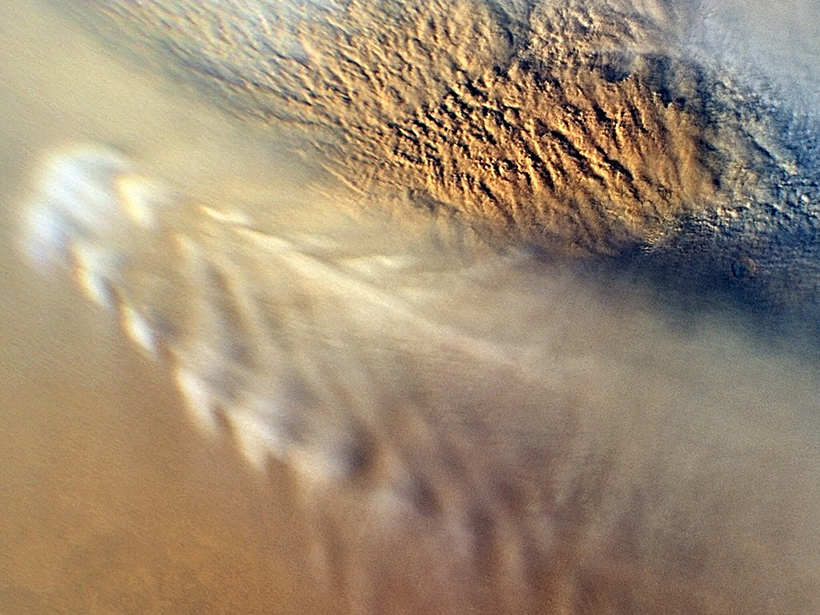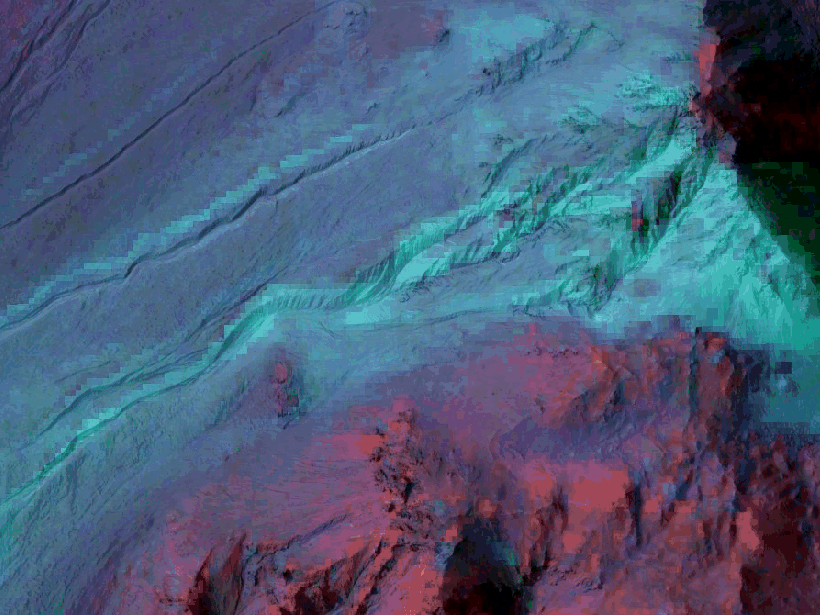The next Mars rover will be able to land near rugged terrain, giving scientists access to diverse landscapes. It will also cache core samples, a first step in the quest to return samples to Earth.
Mars
Freezing Mars's Core—in the Lab
Mars's core, widely thought to be at least partially molten, may eventually solidify completely, and researchers have turned to lab experiments to find out how.
Mars's Atmosphere Matches Earth's Turbulent Nature
Mars is even more like Earth than we thought, according to a statistical analysis of the planet's swirling atmosphere.
Schiaparelli Lander Likely Crash-Landed on Mars
After its thrusters shut off prematurely, the European Space Agency's newest lander probably crash-landed from 2–4 kilometers above the surface.
European-Russian Mission Reaches Mars: Lander’s Fate Yet Unknown
Although the mission’s lander might not have survived, the new Trace Gas Orbiter spacecraft will explore clues that may indicate extraterrestrial life.
Mars’s Climate May Have Been Wet Much Later Than Thought
Water-carved valleys may be relatively young, challenging assumptions about the history of the Red Planet's climate.
A Flip-Flopping Climate Could Explain Mars's Watery Past
A new hypothesis might reconcile two opposing theories that have tried to explain Mars's mysterious history for more than 40 years.
Delayed Launch Approved for Next Mars Mission
NASA has set a new 2018 launch date for a spacecraft to probe the Red Planet's interior, after instrument failure hobbled preparations for the mission.
How Do Gullies Form on Mars?
New orbiter data support an important role for seasonal frost—not liquid water—in the formation of Martian gullies.
Rocks in Chile Help Scientists Hunt for Life on Mars
Investigating oxalate minerals in the Atacama Desert provides a terrestrial analogue to test techniques that could be used to study the carbon cycle in the cold deserts of Mars.










